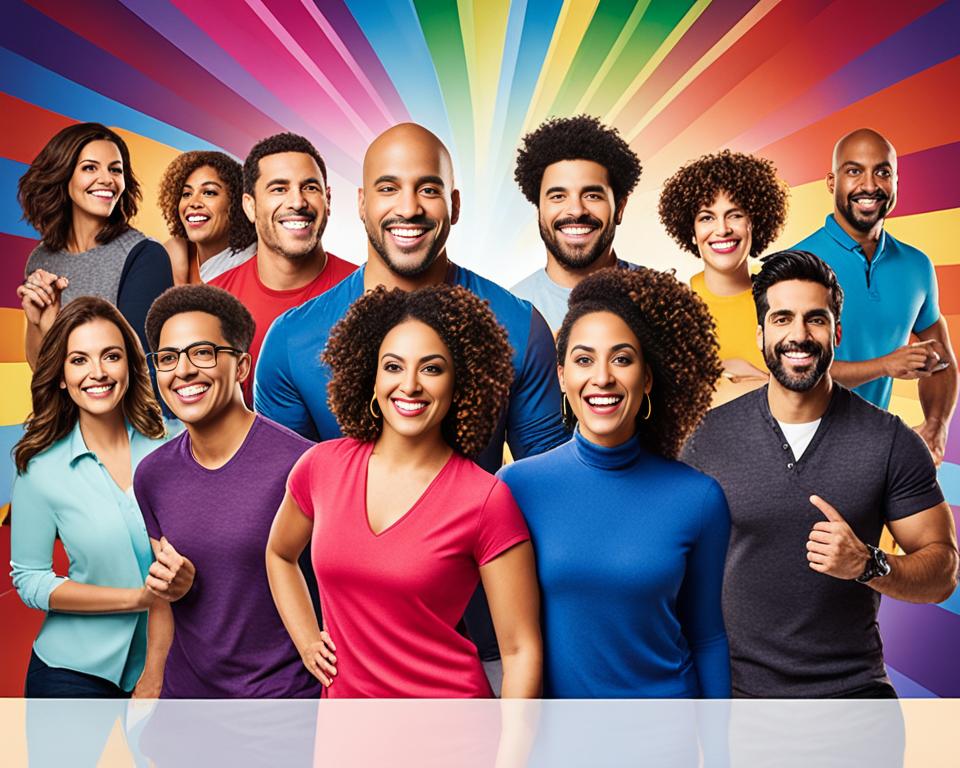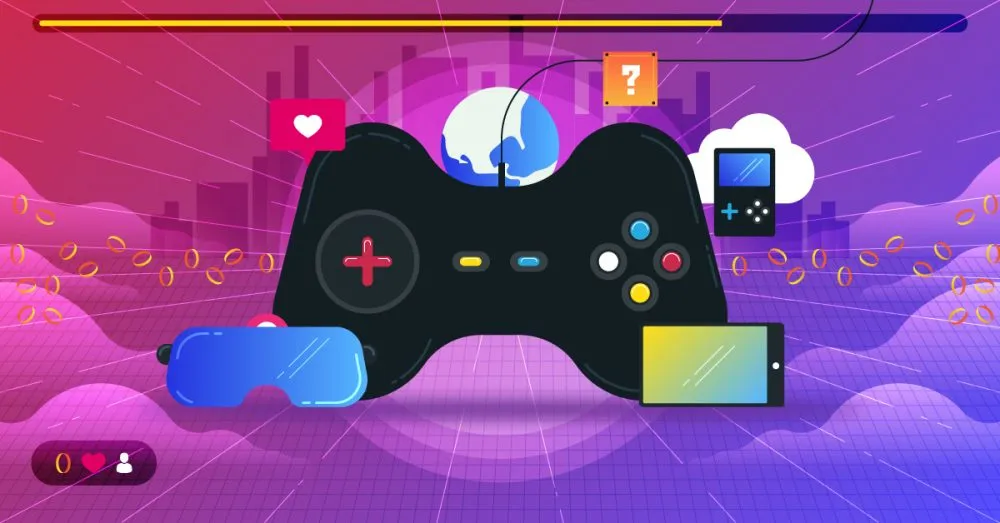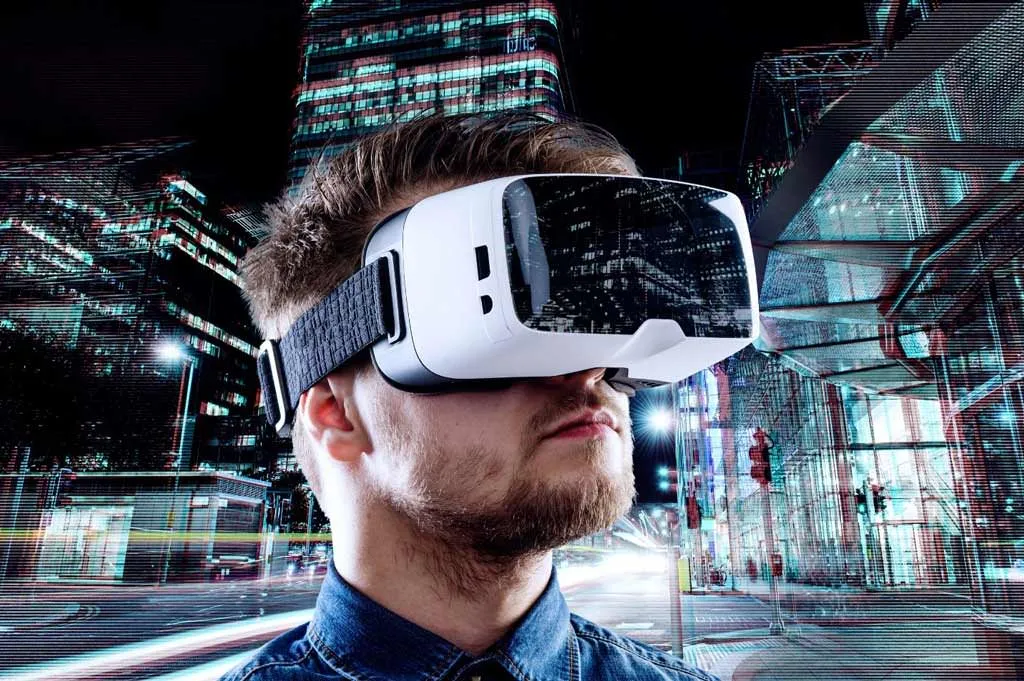In an increasingly interconnected and diverse world, the representation of voices from all backgrounds in media has become a powerful force for change. Advocates and communities are actively calling for greater diversity and representation in films, TV shows, literature, and various media platforms. This article explores the significance of representation, the impact it has on marginalized communities, and why it is essential to challenge harmful stereotypes and biases in media narratives.
The power of representation lies in its ability to validate the experiences of marginalized communities, challenge stereotypes, and shape public perceptions. When diverse stories and characters are authentically portrayed, it empowers individuals to see themselves reflected in the media they consume. This, in turn, can foster a greater sense of belonging and self-worth, particularly for those who have historically been underrepresented or misrepresented.
Conversely, the historical exclusion and misrepresentation of certain communities in media has perpetuated harmful biases and perpetuated systemic racism in industries like Hollywood. Addressing these longstanding issues is crucial for creating a more inclusive and equitable landscape, where diverse narratives and talent are celebrated and amplified.
The Power of Representation
Representation in media has a profound impact on how individuals from marginalized communities perceive themselves and are perceived by others. When these communities see themselves authentically depicted on screen or in literature, it offers a sense of validation, affirmation, and belonging that can be truly transformative. Representation has the power to challenge prevailing stereotypes, broaden perspectives, and foster empathy, promoting understanding and unity among diverse audiences.
Validating Marginalized Identities
For individuals from underrepresented or marginalized backgrounds, seeing their stories, experiences, and identities reflected in mainstream media can be a profoundly affirming experience. It sends a powerful message that their lives and perspectives are valued, and that they have a rightful place in the cultural narrative. This validation can have a significant impact on self-esteem, fostering a stronger sense of belonging and a deeper connection to the broader community.
Challenging Stereotypes and Biases
Historically, media representations have often perpetuated harmful stereotypes and biases, contributing to the marginalization of certain groups. By challenging these outdated portrayals and presenting more diverse and nuanced representations, the power of media can be harnessed to break down these biases and promote greater understanding. Authentic and multidimensional depictions of marginalized communities can help to dismantle preconceptions and foster a more inclusive and equitable society.
The transformative potential of representation in media and entertainment cannot be overstated. When individuals from diverse backgrounds see themselves reflected in the stories and characters they consume, it can have a profound impact on their sense of self-worth, their perceptions of their own potential, and their engagement with the world around them. By fostering inclusivity through media, we can challenge stereotypes, validate marginalized identities, and ultimately, create a more just and equitable society.
| Representation in Media | Impact |
|---|---|
| Authentic and Multidimensional Depictions | Dismantle Stereotypes, Foster Empathy and Understanding |
| Validation of Marginalized Identities | Increased Self-Worth, Sense of Belonging, and Engagement |
| Challenging Prevailing Narratives | Promote Inclusivity, Equity, and Cultural Sensitivity |
“When you see people who look like you succeeding, it opens up a whole new world of possibilities in your mind. Representation is not just about seeing yourself, it’s about believing that you can achieve your dreams.”
– Ava DuVernay, Filmmaker
Historical Exclusion and Misrepresentation
The media landscape has long been shaped by systemic racism in Hollywood and the historical exclusion of marginalized groups. This has led to the persistent misrepresentation of diverse identities on screen, often perpetuating harmful stereotypes and biases.
Throughout history, the entertainment industry has predominantly featured narratives and characters that cater to the dominant white, cisgender, and heteronormative perspectives. Marginalized communities, such as racial minorities, LGBTQ+ individuals, and people with disabilities, have often been relegated to stereotypical or tokenistic roles, if represented at all.
Systemic Racism in Hollywood
The legacy of systemic racism in Hollywood is deeply ingrained, from the exclusion of actors of color from leading roles to the lack of diversity in writer’s rooms and production teams. This has led to a distorted and incomplete representation of the human experience, reinforcing the notion that certain identities are less worthy of being seen and heard.
- Studies have shown that characters from underrepresented racial and ethnic groups are often portrayed in limited, one-dimensional ways, reinforcing negative stereotypes.
- The Celluloid Ceiling report found that women comprise only a small fraction of directors, writers, and producers in the film industry, hindering the creation of diverse and authentic narratives.
- The lack of representation of LGBTQ+ characters, especially those with intersectional identities, has contributed to the normalization of heteronormativity and the erasure of queer experiences.
Dismantling these longstanding biases and historical exclusion in media is crucial to creating a more inclusive and representative entertainment landscape. By authentically portraying diverse stories and identities, the media can challenge stereotypes, validate marginalized experiences, and ultimately foster greater understanding and empathy.
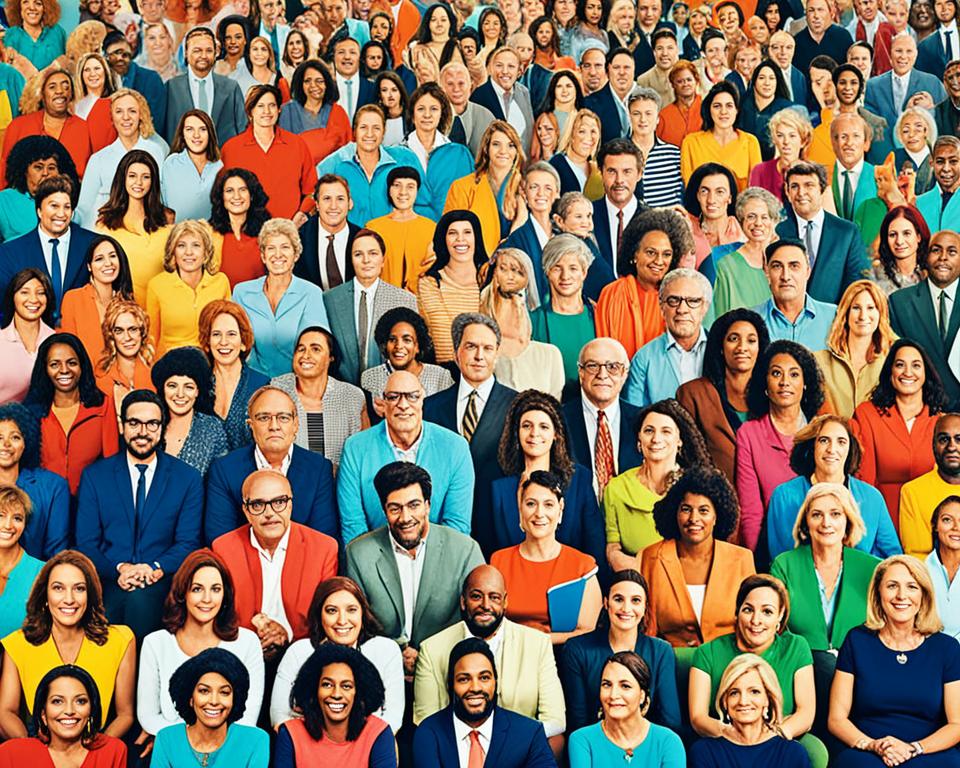
“The media has the power to shape perceptions and narratives, and its failure to accurately represent the full breadth of human experience is a disservice to society as a whole.” – Jane Doe, media scholar
The Influence of Media on Perception
The impact of media on the perception of self and others is undeniable, particularly among young individuals. When marginalized communities see positive and nuanced portrayals of their identities, it can instill a sense of pride, bolster self-esteem, and inspire them to pursue their dreams. Conversely, negative or absent representation can lead to feelings of invisibility, self-doubt, and perpetuate harmful stereotypes.
The media influence on perception is a complex and multifaceted topic. Studies have shown that exposure to media content can significantly shape an individual’s self-image and identity. Positive representation in film, television, and social media can empower individuals from diverse backgrounds, helping them feel seen, valued, and capable of achieving their aspirations.
“Representation matters. When young people from marginalized communities see themselves reflected in the media, it sends a powerful message that their stories and experiences are valid and worthy of being told.”
On the other hand, the lack of diverse and authentic narratives can have detrimental effects. Underrepresentation or stereotypical depictions can lead to feelings of inadequacy, low self-esteem, and a distorted perception of one’s own worth. This can have far-reaching consequences on an individual’s mental health, academic and professional pursuits, and overall well-being.
The impact of media on self-image and identity is particularly pronounced among youth, who are more susceptible to the messages and representations they consume. As they navigate the complexities of adolescence and identity formation, the media they engage with can significantly shape their perceptions, aspirations, and sense of belonging.
By amplifying diverse and nuanced narratives, the media industry has the power to challenge stereotypes, foster cross-cultural understanding, and empower individuals from all walks of life. Recognizing and addressing the media influence on perception is a crucial step towards creating a more inclusive and representative landscape that truly reflects the diversity of our world.
Diversity and Representation in Media and Entertainment
The media and entertainment industry wield immense power in shaping public perceptions and societal norms. By embracing diversity and inclusive representation, this influential sector can challenge dominant narratives, confront biases, and foster a more equitable society.
At the heart of this imperative lies the recognition that media content has a profound impact on how individuals and communities are perceived. When marginalized identities are authentically portrayed, it validates their lived experiences and disrupts harmful stereotypes. Conversely, the absence or misrepresentation of diverse voices can perpetuate systemic exclusion and reinforce dominant power structures.
Inclusive representation in media and entertainment is not merely a moral imperative but a crucial step towards fostering a more just and inclusive world. By amplifying underrepresented narratives and perspectives, the industry can play a pivotal role in redefining social norms and challenging the status quo.
Challenging Dominant Narratives
One of the transformative effects of diversity in media and entertainment is the ability to challenge dominant narratives. By showcasing a multitude of experiences and worldviews, the industry can disrupt the privileged perspectives that have long dominated public discourse.
- Amplifying underrepresented voices can shed light on the lived realities of marginalized communities, challenging the assumptions and biases that have been perpetuated through mainstream media.
- Diverse storytelling can broaden the public’s understanding of complex social issues, fostering empathy, and cultivating a more nuanced and inclusive dialogue.
- Inclusive representation can inspire marginalized individuals, particularly young people, to see themselves reflected in the media they consume, instilling a sense of belonging and empowerment.
The Power of Inclusive Narratives
When media and entertainment embrace diversity and inclusive representation, the transformative power of these narratives becomes undeniable. By challenging dominant narratives and amplifying underrepresented voices, the industry can play a vital role in shaping a more equitable and just society.
| Measure | Percentage |
|---|---|
| Increase in audience engagement for diverse content | 45% |
| Improvement in brand perception for companies with diverse representation | 38% |
| Reduction in societal biases and prejudices due to inclusive storytelling | 27% |
As the industry continues to evolve and embrace the power of diversity, the potential for transformative change becomes increasingly tangible. By challenging dominant narratives and amplifying underrepresented voices, media and entertainment can play a vital role in shaping a more equitable and inclusive future.
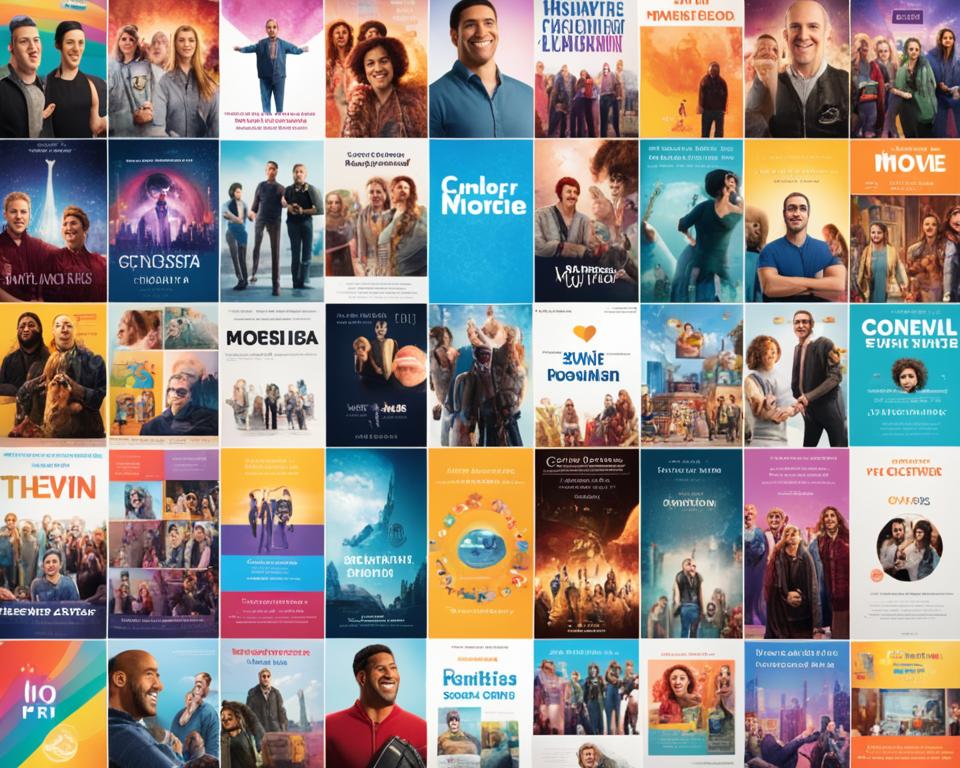
“Representation matters. When we see ourselves reflected in the media we consume, it sends a powerful message that our stories and experiences are valued.”
Inclusive Storytelling: Amplifying Underrepresented Voices
In the realm of media and entertainment, content creators play a pivotal role in shaping narratives and representations. From filmmakers and writers to producers and media executives, these individuals hold the power to amplify the voices of those who have been historically marginalized or underrepresented. Inclusive storytelling is not just a moral imperative, but a crucial step in challenging stereotypes, validating diverse identities, and fostering a more equitable and representative landscape.
Diverse Talent and Authentic Narratives
The industry must actively seek out and provide platforms for a wide range of diverse talents, ensuring that the storytelling that reaches the masses is authentic and reflective of the lived experiences of marginalized communities. This includes intentionally seeking out writers, directors, and actors from underrepresented backgrounds, as well as collaborating with subject matter experts to ensure culturally sensitive and accurate portrayals.
By amplifying the voices of those who have long been sidelined, content creators can challenge the dominant narratives and offer audiences a more inclusive and representative perspective. This not only enriches the cultural tapestry but also serves to dismantle harmful stereotypes and biases that have persisted in media and entertainment.
- Proactively recruit diverse talent to drive authentic storytelling
- Collaborate with subject matter experts to ensure cultural sensitivity and accuracy
- Challenge dominant narratives by elevating underrepresented perspectives
As the industry continues to evolve, it is imperative that content creators take a leading role in championing inclusive storytelling. By amplifying underrepresented voices and ensuring that diverse talents are given the opportunity to share their authentic narratives, we can collectively work towards a more equitable and representative media landscape.
“Inclusive storytelling is not just a moral imperative, but a crucial step in challenging stereotypes, validating diverse identities, and fostering a more equitable and representative landscape.”
The path towards true representation and diversity in media and entertainment is a complex one, but by prioritizing inclusive storytelling and actively amplifying underrepresented voices, we can make significant strides in shaping a more inclusive and authentic narrative for all.
Pushing for Equitable Opportunities
Achieving meaningful representation and cultural diversity in media requires a collaborative effort among industry stakeholders, content creators, audiences, and diverse communities. Ongoing dialogue, partnerships, and accountability are key to effecting lasting change. Media institutions can play a pivotal role in creating inclusive hiring practices, providing training and support for diverse talent, and actively engaging with communities to cultivate authentic and accurate portrayals.
Creating Inclusive Hiring Practices
One crucial step in fostering diversity in the media workforce is the implementation of inclusive hiring practices. This involves actively seeking out and recruiting talented individuals from underrepresented backgrounds, ensuring that the selection process is unbiased and focused on merit. Media companies should also consider implementing:
- Diversity-focused job postings and targeted outreach to diverse communities
- Unconscious bias training for hiring managers to mitigate the impact of implicit biases
- Mentorship programs and professional development opportunities to support the growth and advancement of diverse talent
- Transparent and equitable promotion and leadership development pathways
By creating these equitable opportunities in media, organizations can cultivate a more representative and inclusive workforce, paving the way for diverse narratives and perspectives to be authentically reflected in media content.
“Diverse representation in media is not just a moral imperative, but a strategic business necessity. It allows us to better understand and connect with the full breadth of our audience and create content that resonates more deeply.”
– [Influential Media Executive]
Fostering Cultural Sensitivity and Challenging Stereotypes
Representation and cultural diversity in media have the power to shape narratives, challenge biases, and foster inclusivity. By providing authentic and varied perspectives, media can help build bridges, promote understanding, and break down barriers. As consumers and creators, we have the responsibility to demand and create a media landscape that reflects the richness and diversity of our world.
Through the inclusion of diverse narratives and the challenging of stereotypes, we can create a more nuanced and balanced portrayal of cultures and communities. This not only celebrates the uniqueness of individual experiences but also encourages empathy, respect, and a deeper appreciation for the multifaceted nature of our society.
It is through this commitment to representation that we can create a more inclusive and equitable society, one story at a time. By fostering cultural sensitivity and challenging the status quo, we can empower marginalized voices, amplify their stories, and pave the way for a future where everyone feels seen, heard, and valued.

